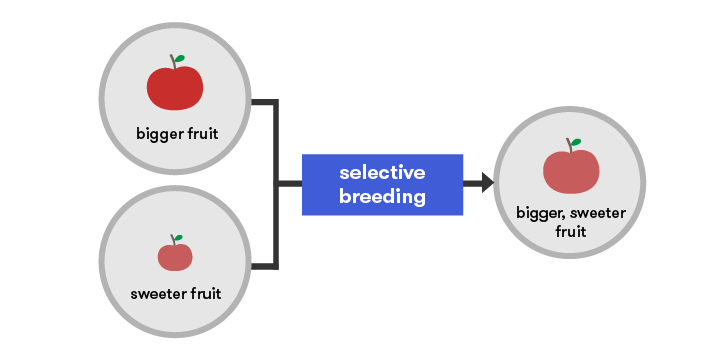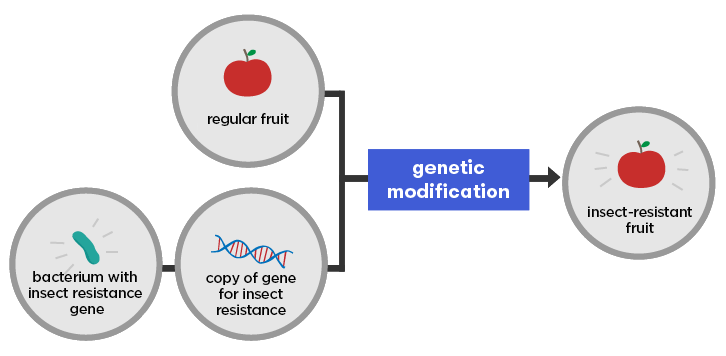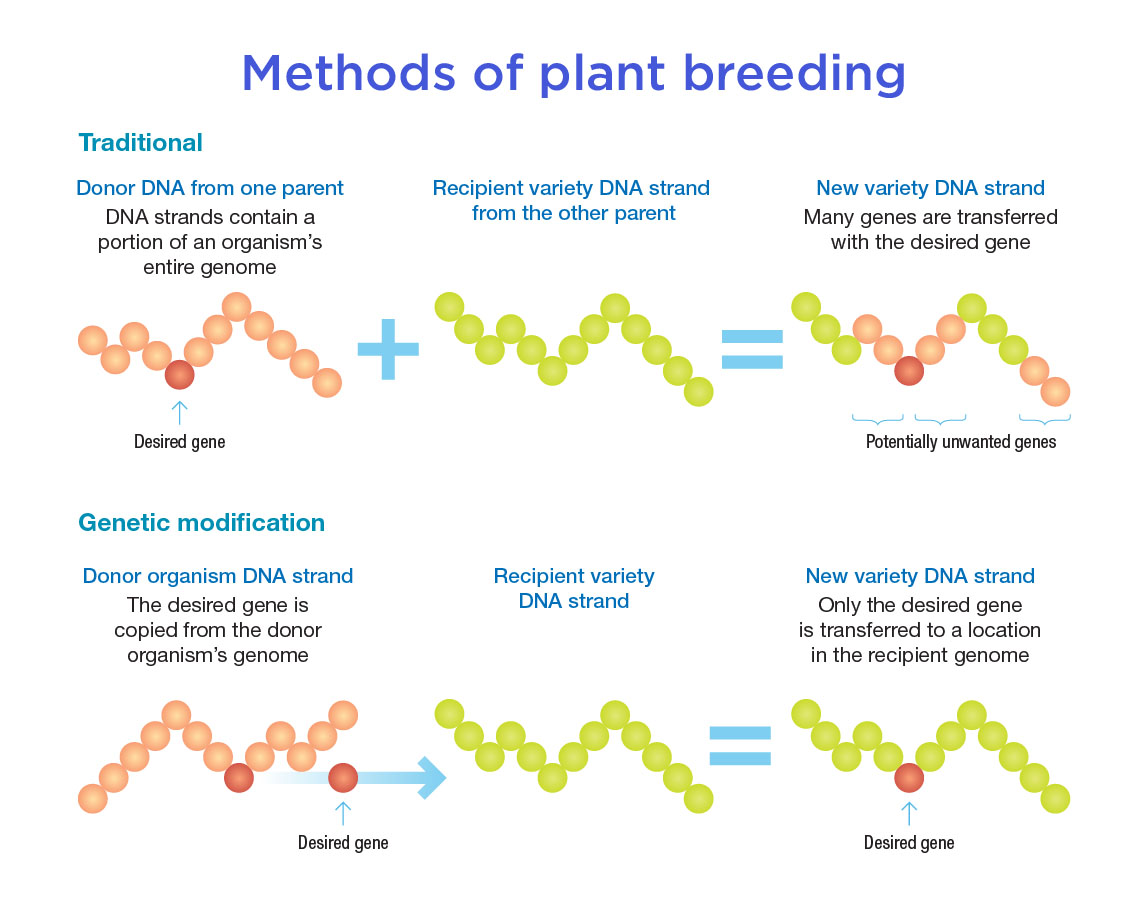What is genetic modification?
How do you feel about genetically modified food?
It’s a question that can prompt some very passionate responses and a whole lot of debate: some argue it could end world hunger; others think the risks are too great.
It’s powerful technology. Scientists can use a range of modern molecular technologies to make crops more productive or more nutritious and better for gut health. Farmers can grow crops that can better withstand harsh environmental conditions, such as drought or salty (saline) soils, or reduce the use of pesticides and herbicides.
And yet, despite the potentially immense benefits, some people are strongly opposed to any kind of genetic modification, arguing that it might be harmful to human health or the environment, or pointing to ethical concerns. Decades of scientific studies have provided plenty of evidence in response to these concerns.
But before we can fully delve into some of the conversations surrounding genetic modification, we need to understand the fundamental science behind what’s involved.
What is genetic modification?
Broadly speaking, genetic modification is nothing new. People have been modifying the genes of plants, animals and microbes for thousands of years—even before they knew what a ‘gene’ was. Early plant and animal breeders would choose individual organisms with desirable traits and use methods such as selective breeding to achieve the result they wanted: bigger and sweeter fruit, perhaps, or dogs that were loyal and easy to train.

As we’ve learned more about the science of genes, we’ve been able to develop technologies that can change those genes in much more precise and directed ways compared to conventional breeding methods. The term ‘genetic modification’ is now generally understood by many people to refer specifically to these modern technologies and their role in developing genetically modified organisms (GMOs) and products.
It’s still a very broad term, as there are many different techniques and technologies used, each with their own advantages and disadvantages. However, they all involve adding, deleting, or turning on or off specific gene functions to achieve more desirable characteristics in an organism.
How can you change genes?
Genes are sections of DNA that provide the instructions for making proteins, which can then build structures or perform functions in living things. All organisms have genes that share similar properties. To change an organism’s genetic makeup, scientists can identify a specific gene that produces a particular function or trait in one organism, such as resistance to insect pests, then copy and isolate that gene to transfer it into another organism. If successful, that gene will then produce that function or trait in the modified animal, plant or microbe.

With traditional selective breeding methods, offspring get a mixture of genes from both parents. These genes might include the ones responsible for producing a desired trait, but they might also bring a bunch of other unwanted genes along with them that produce undesirable traits. Or a breeder may end up with a lot of offspring that don’t have the desired gene at all. It’s a slow process that can be hit-and-miss.
By targeting specific genes, instead of relying on random mixing, gene technology can speed up the process and achieve very precise gene transfer without all the unwanted extra baggage.

Is it ‘natural’?
Modern techniques for genetic modification may be perceived by some people as unnatural, and therefore unhealthy or untrustworthy. Could an inserted gene have effects that we are unaware of? Could it upset the balance of existing genes, causing the plant to produce greater quantities of natural toxins, or to change its nutritional content?
Modern genetic modification methods are more deliberate and precise but based on the same principles that have occurred with or without human intervention for millennia—we’ve just figured out how to achieve those changes with greater accuracy.
There are also strict regulations in place to make sure that any modified genes will not produce a toxic or allergenic protein in a genetically modified organism. Regulators ensure that the organisms and products are as safe as their conventional counterparts before they are approved for commercial production.
Genetic modification is a powerful tool: we can boost global food security, improve the nutritional value of food, use fewer pesticides and herbicides and develop new ways to fight disease. Of course, genetic modification needs to be used with great care, with regulations in place to ensure it’s used safely and effectively. To explore these ideas further, check out the Academy’s ‘Genetic Modification: Questions and Answers’ booklet.





